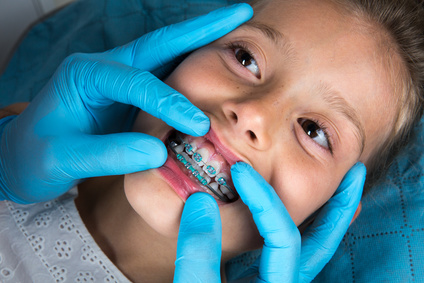Life with Braces
 Numerous aspects of life change as one gets dental braces. Knowing what changes and what remains the same will prepare the patient for the entire process. The process itself is not that difficult as all patients need to do is sit back, relax and let the experienced and skilled dentists do their work.
Numerous aspects of life change as one gets dental braces. Knowing what changes and what remains the same will prepare the patient for the entire process. The process itself is not that difficult as all patients need to do is sit back, relax and let the experienced and skilled dentists do their work.
Inserting the Braces
First, debris will be removed from the teeth and surfaces will be readied so that the brackets can be easily fixed by applying a fluoride-releasing glue, which removes cavity-causing bacteria in areas where the brackets are placed. As brackets are fixed, wires are put into the slots in the brackets. Instantly, the teeth begin to move, even though the patient will not be able to feel it at this time.
What do Braces feel like?
During insertion of braces, patients often feel the brackets coming in contact with their tongue and cheeks. For most patients, it takes some days to adjust to getting braces. After some hours, the patient usually starts feeling the braces moving. It varies from patient to patient as some might feel more discomfort than others.
For patients whose teeth have never experienced movement, they will require time to get used to braces. At this time medicine like Advil or Tylenol may be used to diminish the discomfort. Additionally, dental wax is used in areas where the brackets may be coming in contact with the tongue or cheeks.
Teeth Loosening
After the braces are inserted, teeth begin shifting from their position. As days pass, patients usually feel their teeth shifting. This is extremely normal as the teeth are just following their movement pattern. With time, gaps between the teeth may appear; however, as teeth shift into the most suitable place, these spaces will close.
Taking Care of Braces
It is extremely important that the patient cares for their braces, teeth and follow the professionals’ recommendations. Patients are required to keep their teeth, brackets, and gums clean. The patient will likely be provided with an orthodontic hygiene kit and will be given guidance on how to take care of their braces.
Brushing the Teeth
Patients are recommended to brush their teeth after every meal with a soft bristle toothbrush. The toothbrush should brush below, above and in between the brackets. The roof of the mouth and tongue should also be brushed and food or plaque remains should be removed. The toothbrush should be replaced if the bristles are frayed.
Flossing the Teeth
Patients are recommended to floss their teeth daily to remove the food and plaque around and in between braces and the teeth.
Rinsing the Mouth
Patients are recommended to rinse their mouth using rinses such as Listerine Total Care, which will reduce the buildup of plaque, while also reducing gum inflammation and discomfort.
Eating with Braces
Patients are recommended to avoid certain types of foods during this treatment. With brackets, it is simpler for the gunk to accumulate on the teeth. This leads to a higher acidity-level, which can result in cavities.
Foods with high sugar content create much more plaque, while chewy foods are more likely to stick teeth and brackets, resulting in even more plaque. In order to prevent the brackets from breaking apart, it is best to cut harder food substances into small sizes.
This is an overview of how braces are inserted into the patient’s mouth and what steps should be taken to take care of these braces. So, don’t wait too long!
